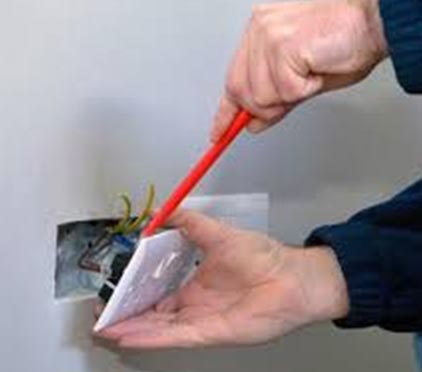Approved Trader
Decorating for Beginners - A Guide to Wallpapering - How to Hang Wallpaper
Wallpapering is not all that difficult. With our instructional guide we can help the decorating beginner bring the railways accurately on the wall.
Air Conditioning
Services
We are here when you need us to service both your residential and comercial properties.
Find a local trader and receive competitive FREE quotes? Whether you're looking for double glazing, to build a conservatory or in need of a builder to construct a home extension, we can help you find approved traders from your local area
Extra tipLight switches and sockets to be unscrewed before wallpapering. To protect tape over the opening then paper around it. If the wallpaper dried, it is cut with a cutter at the appropriate place crosswise. Fold corners, circular cut away and mount the switch.

Find a local trader and receive competitive FREE quotes?
Wallpapering is not all that difficult. With our instructional guide we can help the decorating beginner bring the railways accurately on the wall.
Step 1
Before going to work, they should get patterns and colour samples. Think carefully about how the new wallpaper will affect the feel of the room and how the furniture will fit the new wallpaper. It is important to note that darker shades can make a room feel smaller, so if you are decorating a smaller room then you need to make your colour choice carefullyStep 2
Now you need to take one to two hours to precisely measure your rooms walls. Then add the surface dimensions together to find the amount of wallpaper you will need, it is often worth considering getting additional wallpaper in case of mistakes and misshapes while decorating. Solid-coloured wallpaper, but if you are using patterned wallpapers consider how it will fit together as you reach end of the wallpaper roles, the dimensions of the window and door openings can be deducted when measuring your rooms walls. The situation is different for large patterns.Step 3
Remove the old wallpaper carefully. With wallpaper remover or soapy water can remove old wallpaper well. After drying, the mass can effortlessly grind smooth with sandpaper. Level out to any holes and straighten uneven carefully. Before wallpapering the walls must be clean and dry.Step 4
For wallpapering you need exactly vertical lines on the wall. You can draw a plumb line: A tear-resistant cord is attached to the top of the wall with a small nail, to the lower end to hang a small weight (such as wooden blocks, eraser, etc.). The exact marking the line is best done in pairs: One person can hold while the other draws. Existing skirting boards should unscrewed if possible.Step 5
Insert the tracks on the trestle table and calculate when cutting the wallpaper.Step 6
Mix the paste according to the instructions and let it swell. Then distribute it evenly on the back of the train by swiping across both longitudinally. be carefull not to get any of the wallpaper paste on the front of the sheet. Make sure that the table is clean and dry before each new run.Step 7
place the sheet carefully on the wall ensure the top and bottom edges must meet exactly in the middle. Depending on the thickness of the wallpaper you now let the paste at least 5 minutes and at most 15 minutes stick. You may prepare only as many sheets as you can get in 15 minutes on the wall. If the paper dry out before being placed in position it will no longer be usable.Step 8
Get off of the folded sheet on the ladder and unfold the paper carefully, make sure it does not tear. Press the upper end straight and relatively fixed to the wall edge and let the rest of the web a bit loose knocked and accurate at the auxiliary line along hang down. thus there is on the ceiling no glue spots, the upper wallpapers edge is about 5 cm after back beaten. When papering around windows, doors, etc.: let the wallpaper roll hanging over the corresponding frame member perpendicular. Press with a wallpaper scraper or brush to the frame so that it becomes clear the contour. Using a cutter, cut directly on the wall boundary.Step 9
Now take the wallpaper brush at hand. Brush the wallpapers from top to bottom and smooth disc from the centre outward to the entire area up towards the floor.Step 10
Now the next track's turn. Follow the same procedure as in the first track, but watch out now on pattern connections. You may have to create the path slightly offset.Extra tipLight switches and sockets to be unscrewed before wallpapering. To protect tape over the opening then paper around it. If the wallpaper dried, it is cut with a cutter at the appropriate place crosswise. Fold corners, circular cut away and mount the switch.



